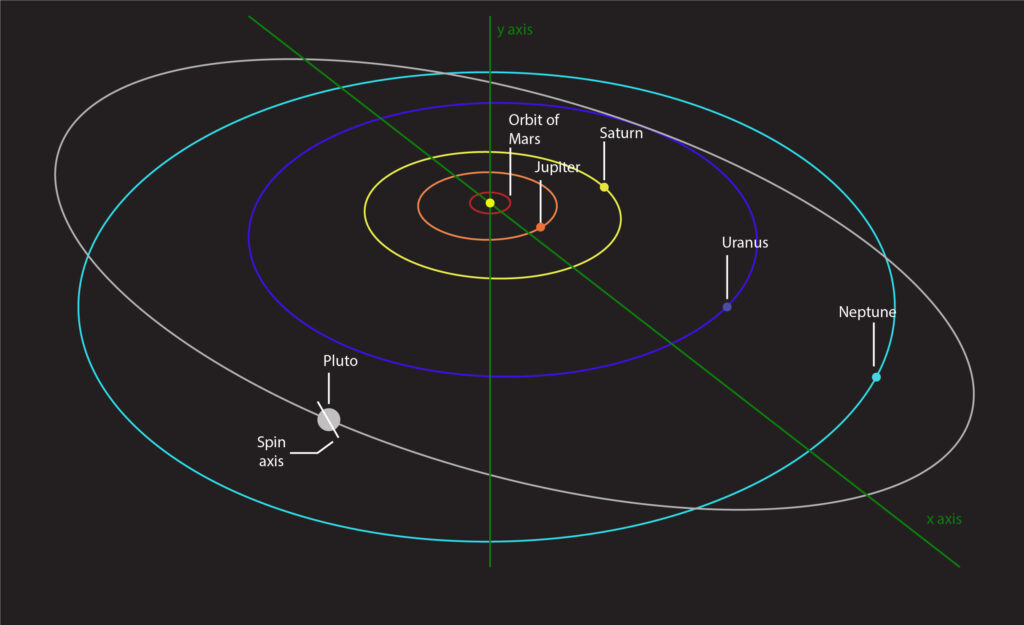Scientists have explained how it happened that Pluto’s orbit is both unstable and stable. The reason for this is a special resonance with Neptune, which is called vZLK oscillation. Other gas giants are also contributing to the stabilization of its orbit.

Pluto’s orbit is determined by its interaction with Neptune
Pluto has an elongated orbit with an eccentricity of 0.25. It is also inclined at an angle of 17 ° to the plane of the ecliptic, in which the major planets rotate. In addition, the orbit of this ice dwarf is unstable. It performs each turn in a slightly different way than the previous one.
But such an unstable orbit remains unchanged for billions of years. And recently, scientists from universities in the United States and Japan were able to explain how this happens. The reason for this was that at the point of orbit closest to the Sun, Pluto is closer to it than Neptune. This point is much “lower” than the plane of the ecliptic. In fact, at the moment of maximum convergence, the ice dwarf “dives” under the trajectory of the eighth planet.

Scientists have concluded that this arrangement of the planets corresponds to an exotic resonance, which was discovered in the second half of XX century. It is called vZLK oscillation. In it, the orbit of Pluto should behave exactly as it is observed: to oscillate around a certain point, but never far from it.
What is the vZLK oscillation of Pluto
The vZLK oscillation is named after three scientists who participated in its study: Hugo von Zeipel, Mikhail Lidov and Yoshihide Kozai. Sometimes it is also called simply the Lidov-Kozai resonance. It was found while trying to solve the problem of three bodies.
Oscillation, in other words stable swaying, occurs when two bodies interact, when the third is at a considerable distance from them. In the case of Pluto and Neptune, such a body is the Sun. However, scientists who were able to explain the orbit of Pluto, decided to test whether it is also influenced by Uranus, Saturn and Jupiter. It was difficult to take them into account separately, so they reduced their interaction to one parameter.
It turned out that this influence is really important. And it is critical to take into consideration all three planets. Only then does Pluto’s strange orbit remain stable. More accurately, it is actually chaotic, but this chaos does not go beyond certain limits.
According to computer simulations, Pluto’s orbit has remained the same since almost the very formation of the solar system and will remain so for billions of years. Moreover, calculations show that it is the interaction with the giant planets that stabilized the orbit of this celestial body in this way.
Based on materials: www.sciencealert.com

